Foi um lindo dia hoje na área da baía, então fui para Napa e Pope Valley. Eu estava explorando um novo território em busca de uma pequena mariposa, Heliolonche é rápida, que aparentemente está esperando que um clima agradável mais contíguo surja. Esta temporada está um pouco atrasada por causa do frio e da chuva, mas tenho esperanças de uma revisita bem-sucedida dentro de algumas semanas. Contudo, Eu encontrei um punhado de lindos microleps. Todas essas mariposas estão no gênero Adela e família Adelídeos (ou alguns diriam Euncurvariidae). Eles são comumente conhecidos como “mariposas fadas” porque parecem dançar sobre canteiros de flores – o que aparentemente as fadas adoram fazer. Parecia que os machos estavam defendendo uma pequena área, com dois a três de cada vez, girando um em torno do outro alguns centímetros acima das flores. Presumo que essas danças fossem territoriais porque nenhum acasalamento foi observado. Enquanto as fêmeas têm antenas longas, os machos levam isso ao excesso. Eu colecionei uma série legal, mas eu ainda não descobri a espécie – Quantos você vê? Agradecidamente, todos os Adelídeos estavam cobertos por um 1969 artigo de Jerry Powell, que também mora na minha rua.
Depois de ver as coleções aqui no CAS, e lendo a monografia, parece que a maioria deles são Adela trigrapha. É um Adelid comum na área da Baía de São Francisco e na maioria das áreas costeiras da Califórnia.. A variação é considerada considerável, com faixas quebradas e contínuas, bem como variação do vermelho na coroa. A outra Adelid é facilmente identificada Adela flammeusella.
Adela trigrapha Zeller 1875
(mais imagens depois do intervalo)
Adela trigrapha Zeller 1875
Adela flammeusella Câmaras 1876
Adela trigrapha Zeller 1875
Adela trigrapha Zeller 1875
Adela trigrapha Zeller 1875
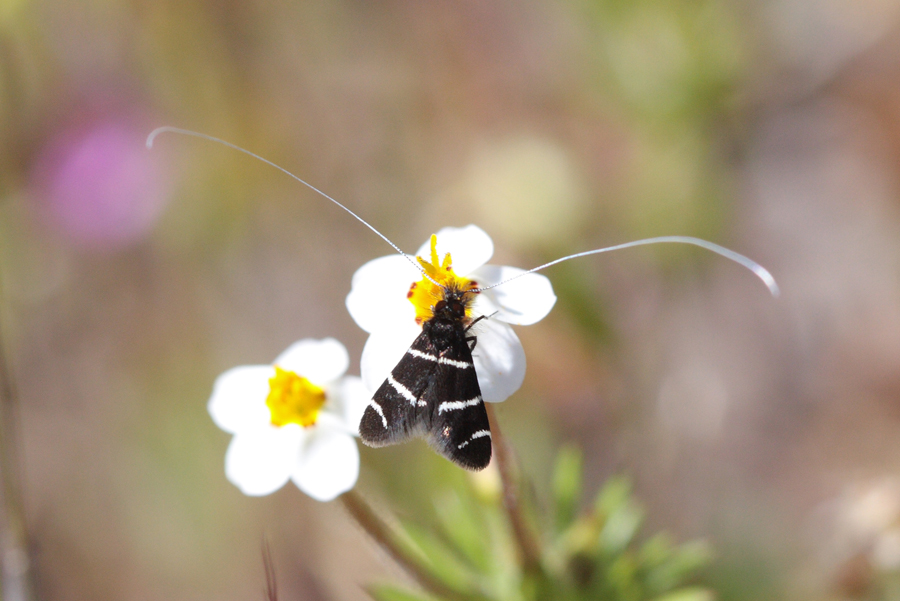
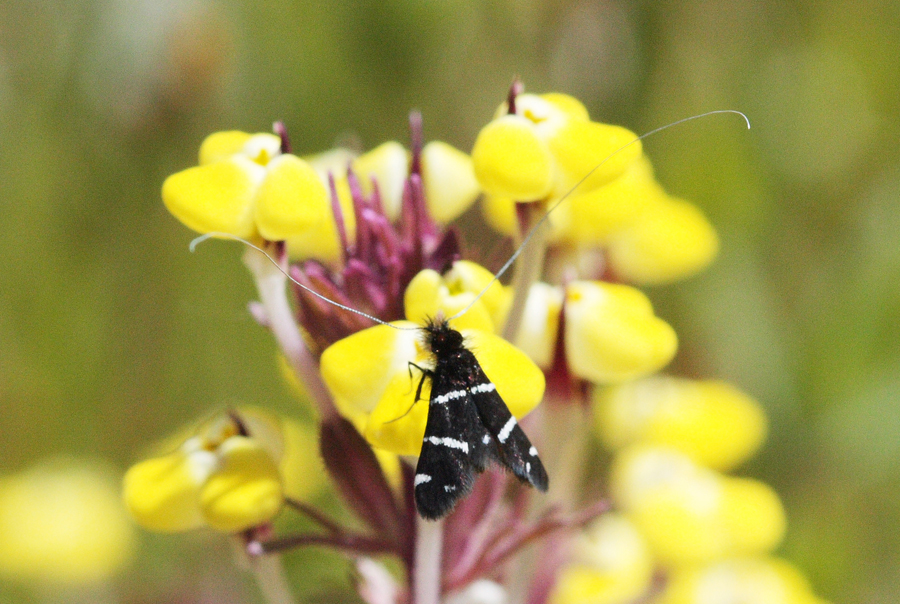
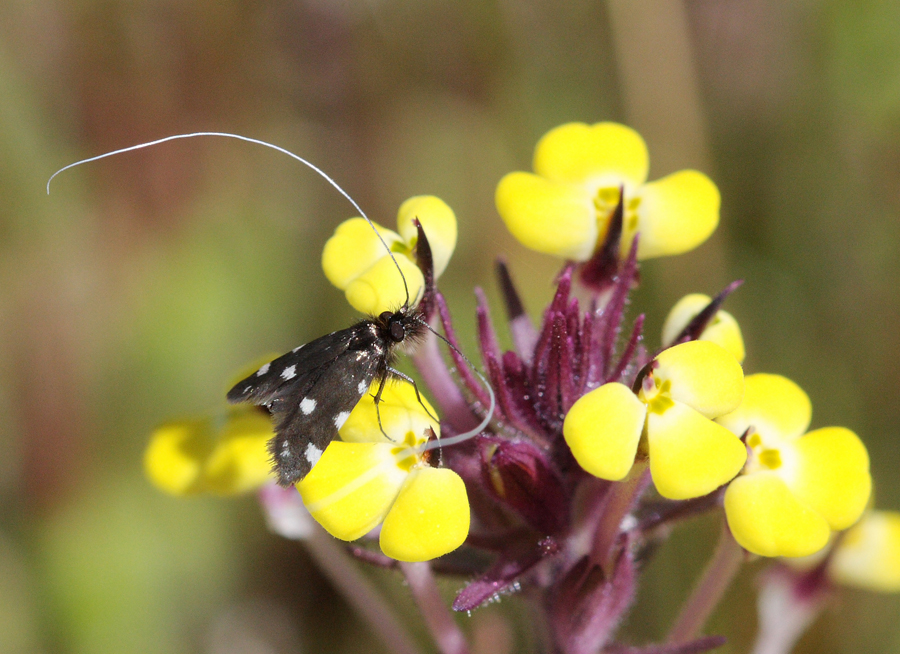
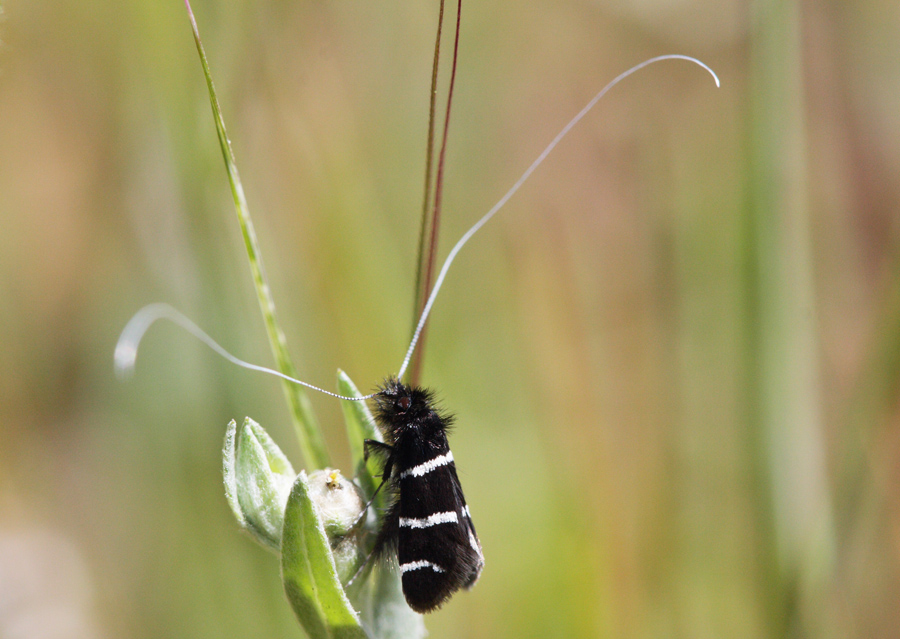
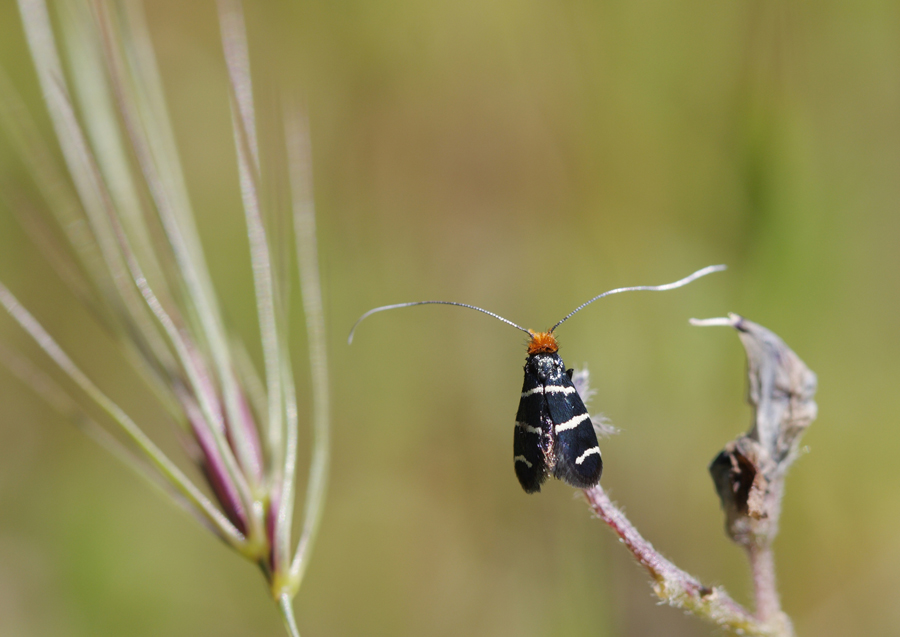
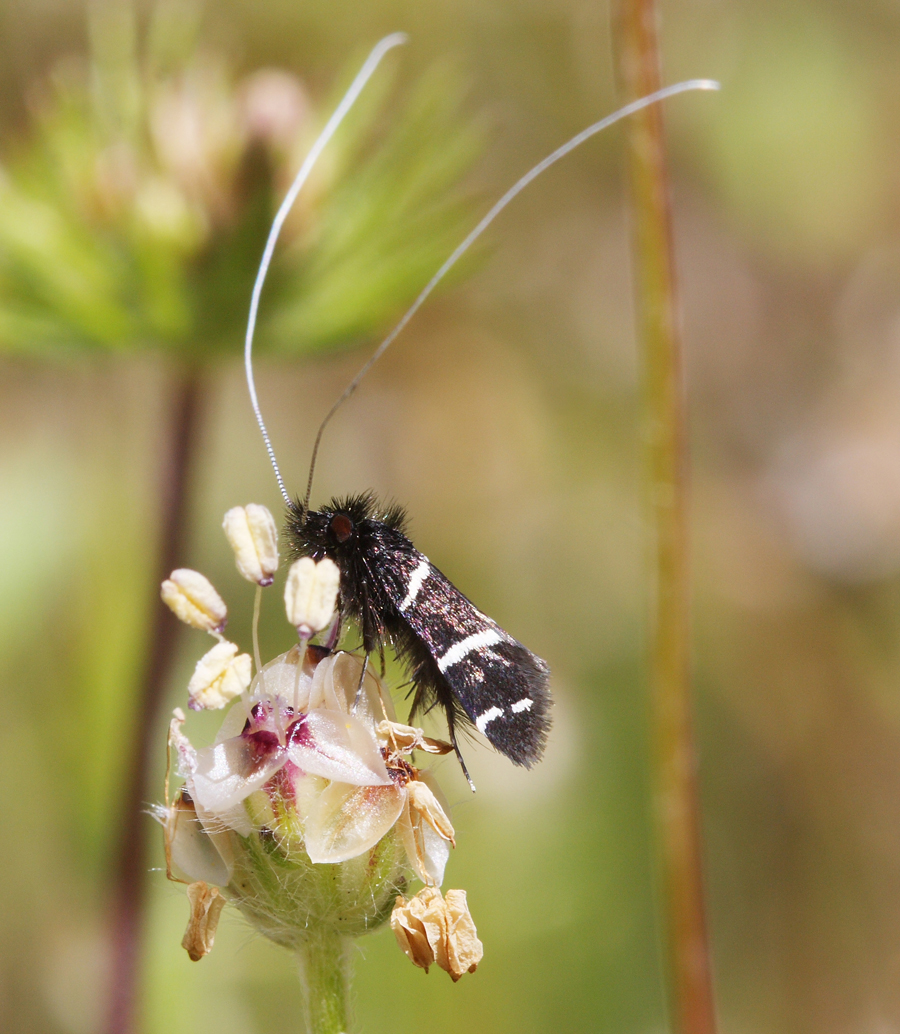

Must be at least three species – what about the one with the orange head? The markings are like those in photos 1 e 4, but the antennae don’t look as long and I’m wondering if this is sexual dichroism.
I hung out with a moth guy in my early days, who introduced me to “Incurvariidae.” They’re quite small as I recall – must be quite a challenge to mount.
Chris
Very unusual moth. To me it looks like a stag horn moth. How big is the wing span?
Yes I’m thinking 3 as well. I thought dimorphism at first too, but reading Powell it sounds like there are 2 species that are both supposed to have orange on the head to varying degrees. Para não mencionar, they shouldn’t overlap in range. It’s the ones without the orange that are more puzzling! I’ll just have to go over to Berkeley and have Jerry put names on them.
I kind of cheat by mounting my micros upside down – and I’m trying to illustrate exactly how I do it so I can add it to the techniques section.
And as far as micros go these guys are big! About 12mm wing tip to wing tip.
I love these little moths!…used to see them often while hiking along the coastal trails at Pt Reyes, on Calochortus tolmei.
Not which species though, perhaps you can put a name to it?
http://bobabela.com/California-Nature/Insects-Spiders/7263324_oXTZd#466874794_R7RiX
Updated, looks like they are all the same. Bob – your moth would also be A. trigrapha.
Ah, so two species rather than three – the post apical band can be complete or broken, but what about the orange head?
Obrigado chris.
It’s still confusing. Males have the orange, which varies considerably. There is still a chance some of these are Adela eldorata, which more commonly has a bright orange crown. I’ll still have Powell sort these specimens out and tell me the verdict.
All the monograph says in regards to the red on A. trigrapha is “… and a few to several orange scales at the back of the crown.” No note on dimorphism.
[…] Grinter, at The Skeptical Moth, goes moth tasting in the Napa Valley and photographically samples some intoxicating vintages of Adelidae fairy […]
[…] Adela trigrapha (Moth Tasting in Napa) […]
[…] since I saw Chris Grinter’s beautiful photographs, I have wanted to see (and possibly photograph) the tiny little moths known as fairy moths (family […]